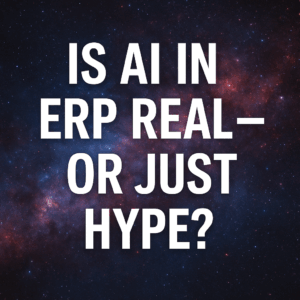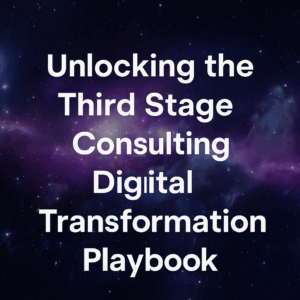Having an effective change management program in place as part of your digital transformation is the number one key to success. However, there are a number of pitfalls and mistakes that change management programs often make. But what exactly are those mistakes?

Table of Contents
ToggleNo Change Program
Perhaps the biggest mistake we see with change management programs and digital transformations is just a lack of a change program or a change strategy at all. Oftentimes, organizations get started on the transformation, they go out and evaluate software, and they start implementing. Then, they wait until some sort of resistance starts to form, or until they realize that the change is going to be a little bit more difficult than they thought, and only then do they try to play catch-up by implementing a change strategy and plan. This is after it’s too late and after they’ve already caused delays because now people are starting to resist and push back on the project. Probably the biggest mistake we see is project teams and organizations that don’t have a change strategy or a change plan, which creates a lot of other problems that I’ll talk about throughout the rest of this video.
Sole Focus On Change and Communication
One of the biggest issues we see with change programs and digital transformation is a misunderstanding of what change management really is and a myopic view of its true nature. More specifically, we commonly see organizations and project teams that think they can just train people on how to use the software and communicate to them what the changes are and what’s happening with the project. There’s nothing wrong with those two things. They are very important to any sort of digital transformation. However, if you think about the magnitude and scope of what change management should be in order to be successful, training and communication are just a tiny part of the overall change program.
In order to be successful, we need to have a complete and comprehensive change program that goes well beyond training and communications.
Understanding the Difficulty of Change
The next major mistake we commonly see with organizations is an underestimation of how difficult change will be. Too often, we hear the refrain from clients that change isn’t going to be that difficult. “Our old systems are terrible, and people are so tired of the old systems; they’re excited for the new systems.” This is especially true when evaluating new systems, and people start to see the endless possibilities of new technologies. People tend to get excited about the idea of change, and this is not where the problem lies. The problem lies in the layers deeper than just general excitement to general support for the project.
What typically ends up happening is organizations have a false sense of security, and they see people excited about the transformation. So, they assume that people will remain excited throughout the transformation. But the problem is that as the project proceeds and as you get deeper into the changes and you start to define and understand how exactly technology is going to impact people, those changes become a lot more difficult than expected.
Now, this is especially true as time goes on because technology has been becoming more and more advanced, and technology is accelerating faster than humans accelerate. So, that divide between where we are today as an organization and where we are as humans, that divide between that and technology and technological capabilities is only growing. So, you can imagine that the disruption that newer technologies have on organizations creates a lot of fear, uncertainty, doubt, and a general threat, or a perceived threat, to people within the organization.
People within the organization largely will absolutely start to resist change, not because they want to sabotage the project, not because they don’t believe in the project, but because they feel themselves that their jobs are being disrupted and threatened in some way. So, we’ve got to address that in our change program, and the only way to do that is to go in with our eyes wide open and fully understand what exactly the resistance to change might be.
The key is to do an organizational readiness assessment upfront so you can understand and anticipate where the potential sources of resistance might be, and you can start to deploy change strategies to address those potential areas of resistance.

Solo Contractors
Another challenge that we see with change programs throughout the world is that organizations have a tendency to want to just go hire a bunch of solo contractors to handle their change management efforts. Not to say that solo contractors can’t add value and that that can’t be part of your strategy to enable change, but relying solely on independent contractors and people that aren’t part of the organization in general can be a tricky proposition.
What ends up happening is a couple of things: one is you end up with independent contractors that have different ways of operating and different mindsets and different degrees of experience in change management, but it also creates a lack of ownership and responsibility within the organization. So, when you’re looking for consulting partners to help you through the transformation, yes, you want to leverage that outside experience, but more importantly, you want to make sure that you’re leveraging a unified methodology and a deliberate approach and strategy to change management, as well as leveraging your internal team as much as possible to augment the external team.
Rather than relying on outsourcing to independent contractors or outside consultants, you really want to look for that right mix or that right hybrid of leveraging your internal competencies and skills as well as the outside competencies and skills. Because at the end of the day, this is your change, this is your organization, and you need the faces of the change
Training Too Far In Advance
Another common mistake we see in change programs is similar to the earlier point I made about the myopic focus on training. Along with that myopic focus on training comes another mistake, which is to train people too early in the process. In other words, we are training people weeks or months in advance prior to ever using the system in a meaningful day-to-day way, and people simply forget how the software works. In some cases, the software changes the way it gets deployed at the end of the day, which looks different from the way we train people earlier on.
Therefore, you want to make sure that you do some training, communications, and change management effort early in the project. You absolutely want to do that. But when it comes to training, it is better left to the end and better left to more of a just-in-time training approach. Having said that, you do want to do some training early on. If you can train your core team and some of the key super users on the base functionality of the off-the-shelf software early on, that can be a very good way to build an internal competency and understanding of the vanilla software.
However, when it comes to training mass amounts and mass numbers of end-users that are going to be using the software every day, you want to train them later in the process. Instead, focus on other change management activities that are prerequisites to the training. For example, things like organizational design and change impact assessments. I also mentioned the organizational readiness assessment. There are a lot of other two-way communications that can be happening along the way to get people comfortable with the change.
By the time you get to training at the end of the project, right before go-live, they are comfortable with the changes. They know what the changes are, why they are happening, how it’s going to affect them. They know what their new jobs are going to look like, what their new roles and responsibilities are going to look like. They’ve worked through all the processing of that change already. Now it’s more of a capstone process of really teaching them how to do those new processes and responsibilities within the technology.
One thing you can do to make sure you don’t make the mistakes that many others do is to make sure you don’t train your end-users too far in advance.
One Size Fits All Approach to Change Management
Now, one of the biggest mistakes that I could make, and for which I could make a pretty strong argument, is actually the biggest mistake we see with project teams. That mistake is to take a one-size-fits-all approach to change management. The problem with the advent of change management certification programs like Prosci and other programs is that they create a false sense of standardization or standardized ways of approaching change management. While there are certainly standard tools you want to have in your toolbox, not all of those tools are appropriate in any given situation. You want to cherry-pick and really focus in a more prescriptive way on how you’re applying change management methodologies and tools to your specific situation.
Every organization has unique strategies, goals, objectives, and priorities. They have different starting points of where they are in their transformation journey today versus where they want to go in the future. They have different degrees of change. So there are a lot of different things that should affect and influence how you deploy change strategies within your organization. Therefore, a one-size-fits-all approach to change management simply doesn’t work. Your culture is unique, your people are unique, your org design is unique, your future state strategy is unique, and your change strategy to some degree needs to be unique in that way.
Now, having said that, you can certainly use core components that are common and similar, or maybe have been reused in the past, but you want to make sure that you’ve tailored and really thought through deliberately about how you’re applying change strategies that make the most sense for you.
Change In Ivory Tower
Another change management mistake I’ll talk about here today is one that’s probably my biggest pet peeve, which is change management consultants and change practitioners that operate in sort of an ivory tower. They don’t want to touch the operational stuff, they don’t want to get too caught up in the technology stuff, they want to do the more touchy-feely academic side of change management because that’s what they enjoy. However, it creates a sort of bias that can be highly ineffective because ultimately, organizational change needs to be heavily and tightly integrated with your overall operational strategy, your future state operations, as well as your future technological landscape.
So, I found that the most effective change consultants are the ones that not only know change management and some of the software side of change but the ones that also understand tangible methodologies for change management. But even more importantly than that, they also understand operations. They understand supply chain management, they understand manufacturing or warehouse management, or whatever the scope is of your digital transformation. You want change consultants and change team members that understand operations and can apply their change management knowledge within that context.
Another important aspect is people that understand technology. They understand how technology works, they’re not afraid of technology. They may not be developers, they may not be the ones to roll up their sleeves and configure the software, but they at least understand it enough to be able to speak a common language and understand the real scope and magnitude of the changes. Therefore, it’s crucial to have a cross-functional and a cross-disciplinary approach to change management that doesn’t just separate change management as a separate work stream. It’s something that should be integrated throughout the entire project.
I hope this has provided you with some lessons and mistakes to watch out for as you’re executing your change strategy and plan for your digital transformation.
If you are looking to strategize an upcoming transformation or are looking at selecting an ERP system, we would love to give you some insights. Please contact me for more information eric.kimberling@thirdstage-consulting.com
Be sure to download the newly released 2023 Digital Transformation Report to garner additional industry insight and project best practices. https://www.thirdstage-consulting.com/reports/2023-digital-transformation-report/





